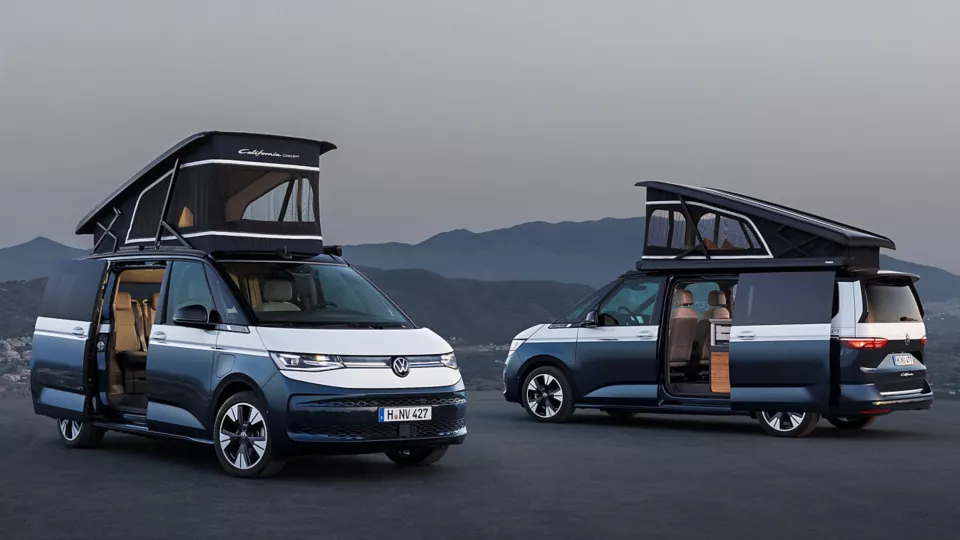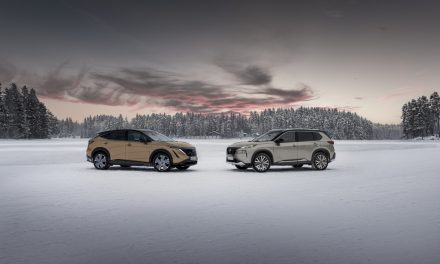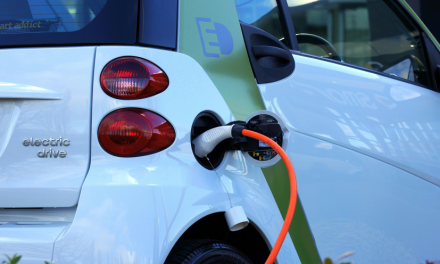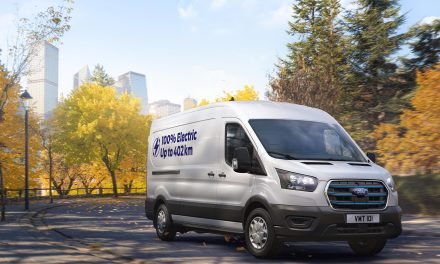The Latest Trends in Concept Vans: Design Innovations
Aerodynamic and Futuristic Designs
In-Depth Analysis
The evolution of aerodynamic design in vans is driven by the need to reduce wind resistance and improve fuel efficiency. Aerodynamics plays a crucial role in enhancing vehicle performance, minimizing drag, and maximizing range, especially for electric and hybrid vehicles. Advances in computational fluid dynamics (CFD) and wind tunnel testing have enabled designers to experiment with shapes and features that streamline airflow over the vehicle.
- Streamlined Shapes: Modern concept vans often feature teardrop or wedge shapes that reduce turbulence and drag. This design approach is influenced by aerospace engineering, where similar principles are applied to reduce drag on aircraft. Van designers incorporate smooth surfaces and rounded edges to allow air to flow seamlessly over the vehicle’s body, minimizing resistance.
- Active Aerodynamics: Some concept vans integrate active aerodynamic features, such as adjustable spoilers, air vents, and grille shutters, which adjust based on speed and driving conditions to optimize airflow. These features can significantly reduce drag and improve efficiency by dynamically adapting the vehicle’s shape to the current aerodynamic needs.
- Influence of Motorsport Design: Motorsport has long been a testing ground for aerodynamic innovations. Concepts borrowed from race cars, such as ground effects and diffusers, are being adapted for road vehicles, including vans. These features help manage airflow under the vehicle and create downforce, enhancing stability and handling.
- Weight Reduction: In addition to shape, reducing weight is critical for improving aerodynamics. Concept vans often use lightweight materials like carbon fiber and aluminum to decrease overall mass without compromising structural integrity. This reduction in weight contributes to better acceleration and fuel efficiency.
Case Study: The Tesla Cybertruck
The Tesla Cybertruck, although primarily a pickup, influences van design with its radical, angular aesthetics and emphasis on aerodynamic efficiency.
- Angular Design: The Cybertruck’s sharp, minimalist lines break from traditional automotive shapes, offering a bold, futuristic look. This design is functional, as the flat surfaces and sharp angles help reduce drag by directing airflow smoothly over and around the vehicle.
- Material Innovation: The Cybertruck utilizes ultra-hard 30X cold-rolled stainless steel, which not only provides durability but also reduces the need for multiple parts and reinforcements, contributing to a lighter and more aerodynamically efficient structure.
- Impact on Van Aesthetics: The Cybertrucks design has sparked interest in exploring non-traditional aesthetics for vans, encouraging manufacturers to experiment with new forms that challenge conventional van designs. This trend pushes the boundaries of what is considered a van, blending elements of utility vehicles with futuristic styling.
Modular Interiors in Concept Vans
Flexibility and Customization
The demand for customizable vehicle interiors is on the rise as consumers seek more personalized and versatile solutions to suit their varied lifestyles. Concept vans are at the forefront of this trend, offering innovative modular designs that cater to different uses, such as family travel, business, and leisure. These interiors are designed to be easily reconfigurable, allowing owners to adapt the space to their specific needs.
Family Travel
- Modular Seating: Concept vans designed for families often feature modular seating arrangements that can be adjusted to accommodate more passengers or create additional cargo space. Seats can be folded, swiveled, or removed entirely to transform the interior from a passenger van to a spacious cargo carrier.
- Entertainment and Comfort: Family-oriented vans may include integrated entertainment systems, climate control options, and ample storage solutions to enhance comfort and convenience during long trips. These features are designed to provide a comfortable and engaging environment for all family members.
Business Use
- Mobile Office Configurations: As remote work becomes more prevalent, concept vans offer mobile office setups that allow professionals to work on the go. These configurations may include fold-out desks, ergonomic seating, and high-speed internet connectivity, turning the van into a fully functional workspace.
- Presentation and Meeting Spaces: Some concept vans are designed to serve as mobile meeting rooms, equipped with screens for presentations, video conferencing capabilities, and configurable seating arrangements to facilitate collaboration.
Leisure and Adventure
- Camper Van Conversions: For those seeking adventure, concept vans with modular interiors can be converted into camper vans with sleeping areas, kitchenettes, and storage for outdoor gear. These designs prioritize flexibility, allowing users to switch between leisure and everyday use seamlessly.
- Customizable Storage: Adventure-focused vans may offer customizable storage solutions for bikes, surfboards, and other equipment, ensuring that users can easily transport and access their gear.
Case Study: Sustainable Concept Vans
Several concept vans have successfully integrated sustainable materials, setting a benchmark for future vehicle designs.
- BMW i3 Concept: Although not a van, the BMW i3 concept’s extensive use of renewable materials provides valuable insights into sustainable vehicle design. The interior features eucalyptus wood, naturally tanned leather, and recycled plastics, showcasing a holistic approach to eco-friendly materials. The lightweight construction, combined with its electric powertrain, results in a significantly reduced environmental footprint.
- Renault EZ-ULTIMO: This concept van utilizes sustainable materials, including recycled plastics and natural leather alternatives, to create a luxurious yet environmentally conscious interior. The design demonstrates how sustainability and luxury can coexist, offering a glimpse into the future of high-end automotive design.
Electric and Hybrid Powertrains
Advancements in Technology
Electric and hybrid powertrains are at the heart of the shift towards cleaner, more sustainable transportation. Recent advancements have significantly enhanced the performance, efficiency, and practicality of these technologies in concept vans.
- Battery Technology: The development of high-density lithium-ion batteries has improved the range and performance of electric vehicles. Innovations such as solid-state batteries promise even greater energy storage capabilities, faster charging times, and enhanced safety features, making electric powertrains more viable for larger vehicles like vans.
- Charging Infrastructure: The expansion of charging infrastructure is critical for the widespread adoption of electric vehicles. Fast-charging networks and wireless charging technology are being developed to reduce charging times and improve convenience, addressing one of the primary barriers to electric vehicle adoption.
- Energy Efficiency: Advanced powertrain management systems optimize energy usage by integrating regenerative braking, intelligent energy distribution, and real-time efficiency monitoring. These technologies enhance the overall efficiency of electric and hybrid vehicles, reducing operational costs and environmental impact.
Market Analysis
The rise of electric and hybrid concept vans is reshaping the automotive market, influencing consumer preferences and driving regulatory changes.
- Consumer Preferences: As awareness of environmental issues grows, consumers are increasingly prioritizing sustainability in their purchasing decisions. Electric and hybrid vans offer a cleaner alternative to traditional internal combustion engines, appealing to environmentally conscious buyers and businesses looking to reduce their carbon footprint.
- Regulatory Influences: Governments worldwide are implementing stricter emissions regulations and offering incentives for electric vehicle adoption. These policies are accelerating the development and deployment of electric and hybrid vans, encouraging manufacturers to invest in sustainable technologies and expand their offerings.
- Market Potential: The market for electric and hybrid vans is expected to grow significantly in the coming years, driven by advancements in technology, infrastructure development, and shifting consumer and regulatory landscapes. This growth presents opportunities for manufacturers to innovate and differentiate themselves in a competitive market.
Technology Integration in Concept Vans
Autonomous Driving Features
Technological Challenges and Solutions
Developing autonomous driving features in concept vans presents several technological challenges, each requiring innovative solutions to ensure safety and reliability.
- Sensor Integration: Autonomous vehicles rely on a combination of sensors, including cameras, lidar, radar, and ultrasonic sensors, to perceive their environment. Integrating these sensors into a coherent system is complex, as they must work together to provide accurate, real-time data. Ensuring redundancy and reliability in sensor systems is crucial for safe autonomous operation.
- Data Processing: The vast amount of data generated by sensors requires rapid processing and interpretation to make real-time driving decisions. Advanced computing systems and algorithms are necessary to handle this data efficiently. Edge computing, which processes data locally on the vehicle, reduces latency and improves decision-making speed.
- Safety Concerns: Safety is a paramount concern in autonomous driving. Ensuring that autonomous systems can handle a wide range of scenarios and edge cases is challenging. Rigorous testing, validation, and simulation are essential to ensure these systems operate safely under all conditions.
- Solutions and Advancements: Recent advancements in AI and machine learning have enhanced autonomous capabilities. Machine learning algorithms can improve over time, learning from vast datasets to recognize patterns and make better driving decisions. Additionally, advances in deep learning have enabled more sophisticated perception and decision-making systems.
Industry Perspectives
Industry experts and researchers provide valuable insights into the future of autonomous driving in vans and its implications for safety and efficiency.
- Expert Insights: Experts highlight the importance of collaboration between automotive companies, tech firms, and regulatory bodies to accelerate the development of autonomous technologies. They emphasize the need for robust safety standards and public acceptance to ensure successful deployment.
- Future Outlook: Researchers predict that autonomous vans will play a significant role in logistics and urban mobility, offering solutions for last-mile delivery and shared transportation. These applications can reduce traffic congestion, lower emissions, and improve efficiency in urban areas.
Smart Connectivity
Integration of IoT and AI
Concept vans are increasingly incorporating IoT devices and AI to create connected, smart vehicles that offer enhanced functionality and convenience.
- Predictive Maintenance: IoT sensors monitor vehicle components in real-time, allowing for predictive maintenance. By analyzing data on component performance and wear, these systems can predict when maintenance is needed, reducing downtime and preventing costly repairs.
- Personalized User Experiences: AI systems in smart vans can learn driver preferences and behaviors, offering personalized settings for climate control, seating position, and entertainment options. This personalization enhances comfort and convenience, creating a more enjoyable driving experience.
- Enhanced Navigation Systems: AI-powered navigation systems provide real-time traffic updates, route optimization, and adaptive routing based on driver preferences and conditions. These systems can also integrate with smart city infrastructure to improve traffic flow and reduce congestion.
Consumer Implications
The integration of smart connectivity technologies in concept vans changes the driving experience and shapes consumer expectations.
- Seamless Experience: Consumers expect a seamless, connected experience, with vehicles that integrate with their digital lives. Features like smartphone integration, voice control, and internet connectivity are becoming standard expectations for modern vehicles.
- Increased Safety and Convenience: Advanced driver-assistance systems (ADAS) and connectivity features enhance safety by providing real-time alerts and assistance to drivers. These technologies also offer greater convenience through features like remote vehicle monitoring and control.
- Changing Expectations: As these technologies become more widespread, consumers expect vehicles to offer not just transportation but a holistic mobility experience that includes connectivity, personalization, and automation.
Notable Concept Vans
Volkswagen ID. Buzz
Design and Features
- In-Depth Exploration: The Volkswagen ID. Buzz is a modern reimagining of the iconic VW Microbus, blending retro design with advanced technology. Its aesthetic pays homage to the original Microbus with a boxy shape and large windows, while integrating contemporary elements like LED lighting and a sleek front fascia. The interior is spacious and versatile, featuring modular seating and a focus on sustainability with eco-friendly materials. The ID. Buzz is equipped with Volkswagen’s MEB electric vehicle platform, offering an all-electric powertrain with a significant range and fast-charging capabilities. It includes state-of-the-art technology, such as autonomous driving features, smart connectivity, and an intuitive infotainment system.
- Consumer Reception: The ID. Buzz has been well-received by consumers and industry experts alike, praised for its nostalgic design and modern features. It represents Volkswagen’s commitment to electrification and innovation, aiming to capture the growing market for electric vehicles. The ID. Buzz’s unique combination of style, technology, and sustainability has positioned it as a key player in Volkswagen’s electric vehicle strategy, potentially enhancing the brand’s market positioning as a leader in the EV segment.
Mercedes-Benz Vision Urbanetic
Modular Design Philosophy
- Revolutionizing Urban Mobility: The Mercedes-Benz Vision Urbanetic represents a groundbreaking approach to urban transportation with its modular design, allowing it to switch between passenger and cargo configurations seamlessly. This flexibility addresses urban challenges such as congestion and pollution by optimizing space and resources. The vehicle’s autonomous driving capabilities and adaptable body make it suitable for various applications, from ridesharing to goods delivery, reducing the need for multiple vehicles and minimizing environmental impact.
- Technological Innovations: The Vision Urbanetic is equipped with cutting-edge autonomous features, enabling it to navigate complex urban environments safely and efficiently. Its smart city integration allows it to communicate with infrastructure and other vehicles, enhancing traffic management and safety. The concept emphasizes user-centric design, providing a comfortable and efficient travel experience for passengers while offering logistical efficiency for businesses.
Nissan e-NV200 Workspace
Reimagining the Workplace
- Rise of Mobile Workspaces: The Nissan e-NV200 Workspace taps into the growing trend of mobile work environments, offering a van equipped with features to support remote work needs. It includes connectivity options such as Wi-Fi and USB charging, ergonomic seating, a fold-out desk, and even amenities like a mini-fridge and coffee maker. This design caters to professionals seeking flexibility and mobility in their workspaces, reflecting a shift in how and where people work.
- Market Potential: The e-NV200 Workspace has the potential to influence future van designs by highlighting the demand for versatile, mobile work environments. As more people embrace remote and flexible work arrangements, the market for mobile workspaces in vans is likely to grow. This trend could lead to increased interest in vehicles that offer a balance between functionality, comfort, and connectivity, driving innovation in the design of future vans.





